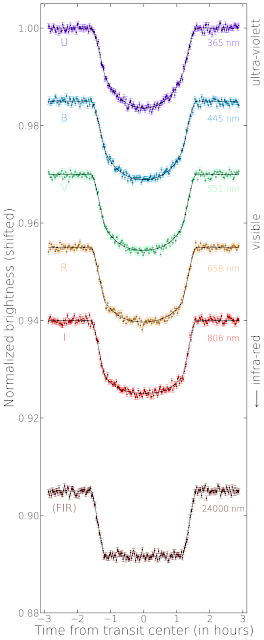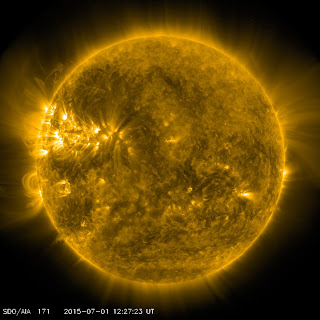In the previous post I presented theoretical transits of how the exoplanet HD 209458 b should look like in different colors. Now I will show how its transits really look like.
On the left you see observations of the Hubble Space Teleskope (HST) from 320 to 970 nm. The last transit, which is much nosier, is not from HST but Spitzer - a NASA space misson for infrared observations.
Actually, HST observed many spectra of the star covering a full transit. By averaging over different parts of the spectrum you get the transit in a certain color. The central wavelength of the interval over which was averaged is given on the right side of each transit. The colors range from the ultraviolet to the near-infrared.
The Spitzer data is special because it lies at a much higher wavelength in the far-infrared. There the star should have virtually no limb darkening anymore and the transit has a box shape. However, you cannot see that very well because it is much more difficult to get precise brightness measurements for these wavelengths. The star is much fainter there and, thus, the noise is much higher. Also the two instruments are pretty different which leads to non-equal measurement errors.
In the last post I showed what we should expect from theory - and the observations agree nicely with it. In UV and blue the shape of the transit is much rounder than for longer wavelength. Indeed, limb darkening is stronger for shorter wavelengths.
It is actually pretty hard to measure the limb darkening of stars; they are just too far away to spatially resolve them. Analyzing exoplanetary transits is one of the best methods to verify whether the theoretical predictions are really correct. And so far the models seem to work pretty well - although in detail observations and theory are not so easy to compare. After all, the exact shape of the transit depends on a lot of different things.













